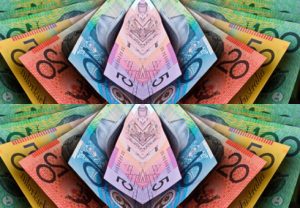Australian Dollar hit by jobs data
21 October 2016 by News DeskAustralian Dollar suffered as economists expected an employment change of 15,000 in September but the number of new jobs fell by 9,800.
 Australian Dollar reflected the fact that job participation rate also fell from 64.7% to 64.5%, indicating that less people were actively in the job market than expected, according to currency specialists TorFX
Australian Dollar reflected the fact that job participation rate also fell from 64.7% to 64.5%, indicating that less people were actively in the job market than expected, according to currency specialists TorFX
As a result investors began to speculate that the Reserve Bank of Australia might reintroduce its easing bias quicker than expected, and the Australian Dollar dropped across the board throughout the day.
New Zealand Dollar (NZD) – The Pound to New Zealand Dollar exchange rate continued slumping around its worst levels on record throughout Thursday’s session.
The New Zealand Dollar was left stronger than its risk-correlated peers due to various factors weighing on the Australian Dollar and Canadian Dollar.
While Sterling was able to edge higher against the ‘Kiwi’ on Thursday night and Friday morning due to a surge in demand for the US Dollar, GBP NZD remained well below the week’s opening levels and near this week’s record-low values.
Australian Dollar hit by jobs data
Pound Sterling (GBP) – Sterling saw mixed movement throughout Thursday trade as the day’s British data once again had little effect on the British currency.
Britain’s September retail sales scores came in below expectations in every print, only improving from -0.3% to 0% month-on-month, missing the projected 0.2%. The yearly score fell past the expected 4.4%, from 6.6% to 4.1%. The Office for National Statistics indicated that the figures had not seen any real impact from the Brexit vote.
Sterling slipped slightly after the report was published, but strengthened towards the end of the day as the increasingly data-invulnerable currency trended on cross-flows instead.
US Dollar (USD) – The Pound to US Dollar exchange rate slipped on Thursday, losing around a third of a cent as the US Dollar strengthened again throughout the day after its mixed performance all week.
Markets spent the day reacting to the final 2016 US Presidential debate, which was perceived as another win for Democrat nominee Hillary Clinton and her more status quo policies.
The US Dollar was also strengthened throughout the day by Fed rate hike bets, which were stronger due to this week’s comments from Fed official William Dudley. This, as well as a predicted election win for Clinton, has increased the likelihood of a December rate hike to investors.
Euro (EUR) – The Pound to Euro exchange rate, despite plunging very briefly on Thursday afternoon, ended Thursday near its highest levels as Euro sentiment trailed off following the day’s European Central Bank (ECB) meeting.
In the ECB’s decision itself, policy was left frozen as was widely expected, with the bank taking a familiar vague tone towards future policy. However, it was ECB President Mario Draghi’s following press conference that had a greater effect on Euro movement.
Draghi stated during the press conference that policymakers had not discussed extending quantitative easing in the meeting this month, which briefly pushed the Euro higher.
However, the shared currency fell back from these highs after Draghi revealed that tapering QE had not been discussed either, and that it was highly unlikely for such a thing to happen. Draghi finished off the conference by indicating that the bank’s next policy change could happen in December. As markets expect December will see QE extended beyond its March 2017 deadline, this weakened the Euro later in the day.
Canadian Dollar (CAD) – The Pound to Canadian Dollar exchange rate continued its advance on Thursday and by Friday morning was trending at its best levels in over a week. This was largely due to a continued profit-taking selloff on oil following the commodity’s yearly highs earlier this week.
This, as well as Wednesday’s mixed Bank of Canada (BOC) policy meeting and a surge in demand for the US Dollar left the oil-correlated Canadian Dollar limp on Thursday and Friday morning. Oil prices remained sturdy on Friday, but had not resumed their advances despite sentiment for the commodity being solid.
Disclaimer: This update is provided by TorFX, a leading foreign exchange broker, its content is authorised for reuse by affiliates.
Learn more about the Australian Dollar – Contact TorFX: Get A Quote
Want to live and work Down Under? Click here for expert help: Skilled Migration to Australia
Want to get a job Down Under? Click here for expert help: How to Get a Job in Australia
Click here for expert help with travel visas: Travel Visas to Australia
Click here for tourist information about Australia: Visit Australia


